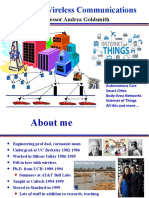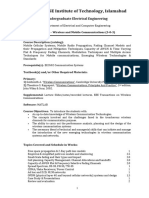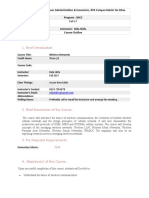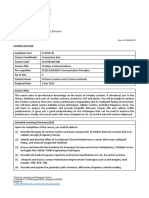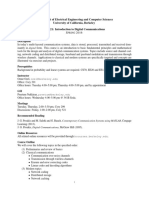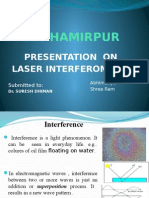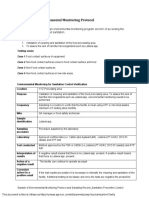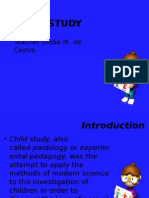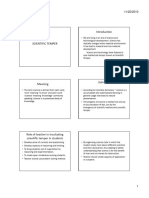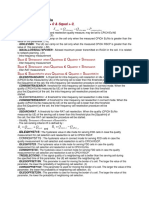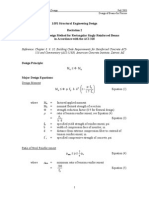0% found this document useful (0 votes)
201 views3 pagesAdvanced Telecom Course Syllabus
This document outlines the syllabus for an advanced telecommunications course taught in the spring of 2009. The instructor's contact information and office hours are provided. The course will cover topics including cellular concepts, wireless channel characteristics, modulation, coding, and wireless networks. Required textbooks and software include books on wireless communications and resource allocation, as well as MATLAB. The course content will be divided into sections on introduction/cellular concepts, wireless channels, modulation/coding, and wireless networks/standards. Students will complete wireless channel and resource allocation simulations in MATLAB, homework assignments, a term presentation, and two exams. Policies are outlined for assignment due dates, grading based on exams, projects and participation, and a zero tolerance policy for academic dish
Uploaded by
Jesus BrownCopyright
© © All Rights Reserved
We take content rights seriously. If you suspect this is your content, claim it here.
Available Formats
Download as DOC, PDF, TXT or read online on Scribd
0% found this document useful (0 votes)
201 views3 pagesAdvanced Telecom Course Syllabus
This document outlines the syllabus for an advanced telecommunications course taught in the spring of 2009. The instructor's contact information and office hours are provided. The course will cover topics including cellular concepts, wireless channel characteristics, modulation, coding, and wireless networks. Required textbooks and software include books on wireless communications and resource allocation, as well as MATLAB. The course content will be divided into sections on introduction/cellular concepts, wireless channels, modulation/coding, and wireless networks/standards. Students will complete wireless channel and resource allocation simulations in MATLAB, homework assignments, a term presentation, and two exams. Policies are outlined for assignment due dates, grading based on exams, projects and participation, and a zero tolerance policy for academic dish
Uploaded by
Jesus BrownCopyright
© © All Rights Reserved
We take content rights seriously. If you suspect this is your content, claim it here.
Available Formats
Download as DOC, PDF, TXT or read online on Scribd
/ 3








